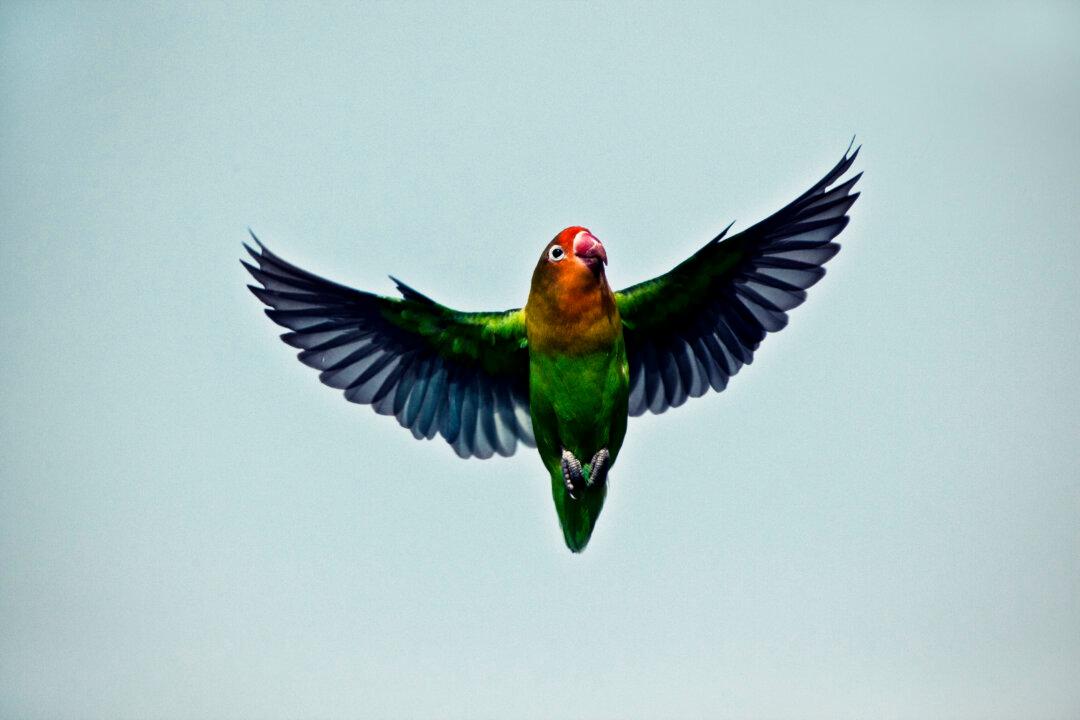Lovebirds are famous for their ability to quickly maneuver through densely cluttered airspace. New research shows that this is likely due to the birds’ ability to turn their heads very quickly.
The findings could inspire better drone camera design.
“During rapid flight through densely cluttered forests every split second counts. Having more time to see and react to your environment gives you an edge in making the right decision,” says David Lentink, an assistant professor of mechanical engineering at Stanford University. “Clearly, there are evolutionary benefits for behaviors that help avoid crashing in complex environments.”
Lentink and his colleagues used stereo high-speed cameras to film the birds as they took off and performed a rapid turning maneuver before landing on the initial perch.



